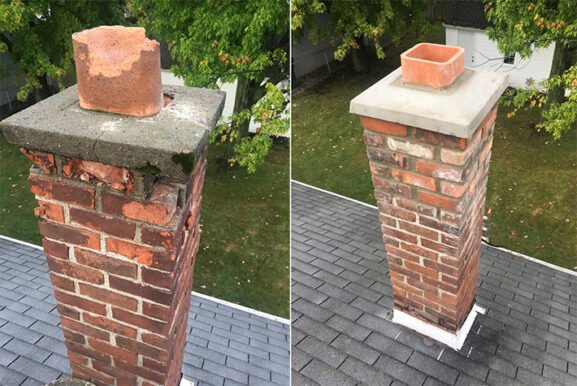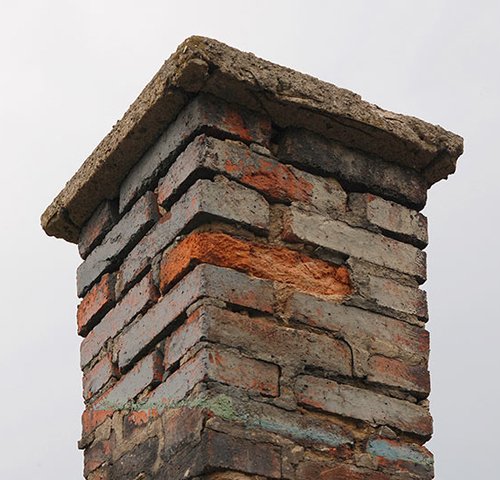Why It’s Smart to Address Chimney Cracks Before They Worsen
Key Takeaways
- Small chimney cracks can quickly lead to serious structural damage if ignored
- Repair techniques vary depending on the type and location of the crack
- Timely maintenance helps prevent water intrusion and costly future repairs
- Homeowners can handle minor repairs, but deeper cracks often need professional help
Understanding the Impact of Chimney Cracks
Cracks in your chimney might seem like a minor issue at first glance. But over time, they can lead to water damage, reduced energy efficiency, poor ventilation, and even fire hazards. The brick or masonry structure is designed to withstand high temperatures and harsh weather, yet even the toughest chimneys are vulnerable to age, moisture, and seasonal freeze-thaw cycles.
Left unaddressed, a hairline crack can widen, allowing water to seep in. This moisture can break down mortar, cause mold, and lead to chimney spalling (the flaking or chipping of masonry surfaces). More seriously, it could allow carbon monoxide or sparks to escape into your home. Acting early is not just about keeping your chimney in good shape — it’s about protecting your entire house.
What Causes Chimney Cracks
Cracks can result from various issues, some of which are preventable with routine inspection. Common causes include:
- Moisture intrusion from rain, snow, or melting ice
- Settling of the home’s foundation that shifts the chimney
- Thermal expansion and contraction from heat inside and cold outside
- Poor construction or use of low-quality mortar or bricks
- Earthquakes or nearby construction work that shakes the structure
If your chimney has been neglected for years or lacks a proper chimney cap or crown, it’s likely more vulnerable to developing cracks. Recognizing the source of damage helps determine the best repair method.
How to Spot Chimney Cracks Early
Not all cracks are easy to spot without a close inspection. Some may be hidden behind the chimney liner or deep in the brick joints. However, there are visible signs that homeowners can watch for:
- Vertical or horizontal cracks in the mortar joints or bricks
- Pieces of brick or mortar falling into the fireplace
- White staining (efflorescence) caused by moisture movement
- Leaks or water stains on walls near the chimney
- Musty odors coming from the fireplace
If you notice any of these signs, it’s time to take a closer look. A yearly inspection by a certified chimney professional is highly recommended — especially if your chimney is older than ten years or hasn’t been serviced recently.
Repairing Hairline and Surface Cracks
For fine cracks or superficial damage on the surface of your chimney’s bricks or mortar joints, repair is relatively straightforward. One of the most common solutions is applying a breathable, waterproof sealant. These products fill tiny cracks and prevent further water intrusion without trapping moisture inside, which could worsen the damage.
Here’s how to approach it:
- Clean the area thoroughly with a wire brush to remove loose debris or dirt
- Dry the surface completely before applying any materials
- Use a crack-resistant chimney sealant rated for exterior masonry use
- Apply it evenly using a brush or sprayer, depending on the product’s instructions
Products like SaverSystems’ ChimneySaver are trusted in the industry and offer protection for up to 10 years (source). Always read the label carefully and follow application guidelines.
Fixing Mortar Joint Cracks with Tuckpointing
If the cracks are in the mortar joints between bricks, a method called tuckpointing is usually the best solution. This involves removing the damaged mortar and replacing it with new mortar that matches the original in texture and color.
Steps for Tuckpointing:
- Use a cold chisel and hammer to remove cracked mortar to a depth of about ¾ inch
- Brush out debris and dust with a stiff-bristled brush
- Mix new mortar that’s compatible with your existing masonry
- Pack it into the joints using a pointing tool, smoothing it to match the surrounding area
- Let it cure for several days, misting it lightly with water if temperatures are hot
Tuckpointing not only seals the gaps but also reinforces the structural bond between bricks. It’s important to match the original mortar strength to avoid putting too much pressure on the bricks, especially in historic homes.
When Cracks Require Structural Repairs
Not all chimney cracks can be fixed with sealant or tuckpointing. Large vertical cracks, deep gaps, or shifting bricks could indicate serious structural problems that demand more extensive repair. These may include:
- Rebuilding the chimney crown if it’s cracked and letting in moisture
- Installing a new flue liner if the existing liner is compromised
- Partial or full chimney rebuilds if damage is widespread or foundational
- Installing a chimney cap to stop future moisture intrusion
In these cases, it’s best to contact a qualified mason or chimney contractor. Attempting structural repairs without proper tools and knowledge could cause more harm or even be dangerous.
Preventing Future Chimney Cracks
Repairing chimney cracks is only part of the solution. Preventive care goes a long way in protecting your investment. To minimize the risk of future damage:
- Install a chimney cap to block out rain, snow, and debris
- Maintain the flashing where the chimney meets the roof to avoid leaks
- Waterproof the chimney exterior using breathable sealants
- Schedule annual inspections to catch small issues before they grow
- Address drainage around the foundation to prevent settling
Moisture is often the root of chimney damage. That’s why waterproofing and regular maintenance are your best long-term defenses.
A Practical Approach to Long-Term Chimney Health
Keeping your chimney crack-free doesn’t require expensive equipment or constant attention — just a bit of proactive care. Whether you’re tackling minor repairs on your own or hiring a pro for major damage, what matters most is acting early. Regular inspection, seasonal maintenance, and quick response to small cracks can save you thousands in repairs and extend the life of your chimney for years to come.

